Tamarind Fruit, Leaves, Flower, Bark Uses, Research
Tamarind fruit is used in making Sambar in Indian cooking, also useful in treating cardiac disorders, non healing wounds, anorexia etc. Its oil and Kshara (water insoluble ash) are also used in treatment.
Botanical name- Tamarindus indica Linn
Family- Caesalpiniaceae
Table of Contents
Vernacular names
Names in different languages:
Hindi name- Imali, Imli, ambli, amili, imli, tamrulhindi, hunase.
English name-Tamarind, Indian date
Kannada name – Hunase Hannu, amli, huli, gotimli hunase annu, hunise.
Telugu name- Chinta Chettu, aamlika, amlika, chintha, cinca, sinja,tintrini.
Tamil name- Puli, amalaphalam, naattupuli, kinjam,puliyam palam,
Malayalam name – amlam, amlika, valampuli, tintrini.
Urdu name – imli, imli muqqashar, maghz tukhm imli.
Persian name – anabalah, tamar-i-hindi
Arab name – dar-al-sida, humar, sabara.
Marathi name – aambali, aamli, amli, chichi, chincha, chitz.
English name -tamrind
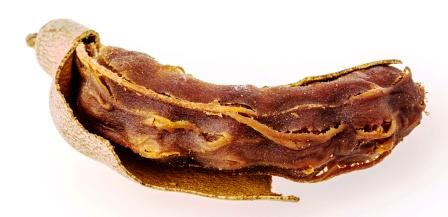
Properties, part used, dosage
Tamarind medicinal properties:
Guna (qualities) – Guru – heavy to digest, Rooksha – Dryness
Rasa (taste) – Madhura – sweet, Amla – sour
Vipaka – Amla – Undergoes sour taste conversion after digestion
Veerya – Ushna – Hot potency
Effect on Tridosha – Balances Kapha and Vata Dosha
Part used- flower, seed, fruit, kshara (alkali)
Dosage –
powder 1-3 g
kshara 500 mg – 1 g
decoction 50-100 ml in divided doses per day
Seasonal and daily usage
Is it advisable to have imli daily in food like in Sambar and Rasam? Or is it only for specific seasonal climate? And why always it’s advised not to take while taking Ayurvedic medicine?
Imli can be used in smaller quantities everyday, like in Sambar, rasam, chutney etc. It is told to be taken more during winter and raining season. This is because during raining season, Vata Dosha will be aggravated and imli decreases Vata Dosha. Its excess usage should be avoided during autumn season, as it can increase Pitta Dosha.
It can be consumed while taking most of the Ayurvedic medicines.
Only in high Pitta disorders such as migraine, gastritis, acid peptic disorders etc, excessive use of imli is avoided.
Can Tamarind be Consumed Daily?
Tamarind water for washing vegetables
Prepare tamarind water – Add a tablespoon of tamarind pulp to 1 liter of water. Mix and mash well. Leave it on for 15 minutes. Mix it again and filter.
Use this water for washing the fruits and vegetables. Tamarind water as tartaric acid. This helps to take away the fertilizers and chemicals that are used in growing fruits and vegetables.
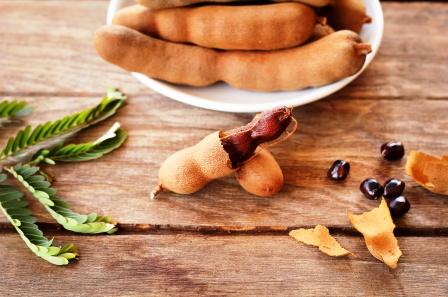
Sanskrit verse
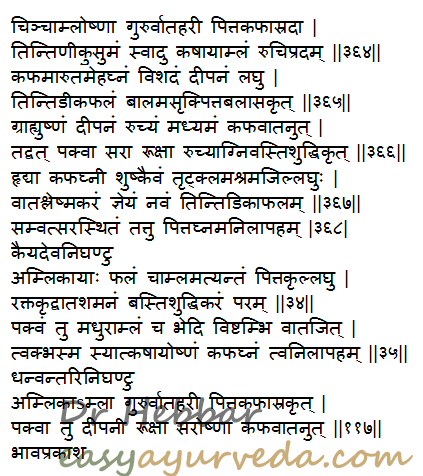
Uses
Tamarind medicinal uses:
Tamarind Flower:
Swadu – sweet
Kashaya – astringent
Amla – sour
Ruchiprada – Improves taste, useful in anorexia
Kapha Vata hara – Balances these two Doshas
Vishada – clarity
Deepana – improves digestion strength
Laghu – light to digest
Indicated in –
Meha – diabetes, urinary tract disorders
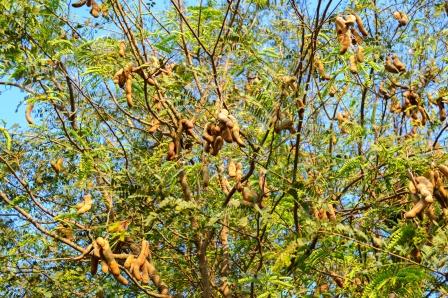
Tamarind fruit:
Unripe fruit health effects:
Atyamla – extremely sour
Laghu – light to digest
Asruk Krut – Causes blood disorders such as abscess, skin disorders, bleeding disorders such as menorrhagia, nasal bleeding
Pitta Balasa krut – Increases Pitta and Kapha Dosha
Semi ripe Imali fruit benefits:
Grahi – absorbent, useful in diarrhoea, IBS
Ushna – hot
Deepana – improves digestion strength
Ruchya – improves taste, relieves anorexia.
Kapha Vata hara
Ripe tamarind fruit uses:
Madhura, Amla – sweet, sour
Ushna – hot potency
Sara – induces mobility, causes diarrhoea, purgation, relieves constipation
Bhedi – relieves constipation
Rooksha – dryness
Ruchya – improves taste, relieves anorexia.
Agnikrut – Improves digestion strength
Vasti Shuddhikrut – cleanses urinary bladder
Balances Kapha and Vata Dosha
Dry tamarind fruit qualities:
Laghu – light to digest
Hrudya – acts as cardiac tonic, congenial for heart
Kaphaghna – Balances Kapha Dosha
Indicated in –
Trushna – excessive thirst
Klama, Shrama – tiredness, fatigue
One year old tamarind fruit balances Pitta and Vata Dosha
Twak Bhasma – Ash / Kshara of tamarind bark / fruit skin –
Kashaya – astringent
Ushna – hot
Balances Kapha and Vata Dosha
Shoolahara – relieves abdominal colic pain
Mandagninashana – improves digestion strength
Ripe tamarind fruit juice qualities:
Madhura, Amla – sweet, sour
Ruchiprada – improves taste
External application
External application of tamarind:
Shopha Pakakara – Causes swellings to secrete pus, initiates healing process.
Vranadosha Vinashana – Cleanses wounds, removes slough and impurities.
One Mushti (fistful quantity) each tamarind leaves and nimba leaves should be taken and it should be tied inside the leaf of kumari and putapaka should be given. Later on, these leaves should be taken out and squeezed well. The obtained juice should be mixed with the powders of triphala, ayas and kataka beeja and made into a fine paste. By applying this paste frequently to the eyes, the symptoms like pain, redness, watering of the eyes along with the eye diseases will be cured. – Vaidya Sara Sangraha
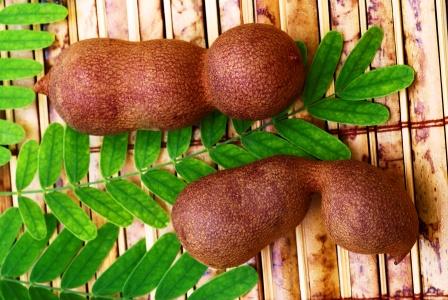
Tamarind leaves:
Shophaghna – Relieves swelling, pain, inflammation
Raktadoshahara – Useful in blood disorders such as abscess, skin disorders, bleeding disorders such as menorrhagia, nasal bleeding etc.
Use of leaves in fomentation: Leaves of tamarind along with leaves of Vitex negundo (nirgundi), Calotropis gigantic (arka) and Datura metel (dhathura) are used in a sweating procedure called Elakizhi. Here, heat is applied on the whole body or part of the body with a cloth sac filled with fried medicinal leaves.
Tamarind oil
Oil extracted from Tamarind:
Katu Paka – Pungent taste
Vilekhana – scraping, relieves slough of wounds, reduces cholesterol deposition in blood vessels.
Ruchya – Improves taste
Kashaya – Astringent
Balances Kapha and Vata Dosha
Na ati sheetala – It is not very coolant.
Ayurvedic medicines
Ayurvedic medicines with Tamarindus indica as ingredient:
Click on the medicine names to know more about them.
Panchamla Thailam – used mainly in the treatment of rheumatoid arthritis and ascites
Shankha vati – Used in Ayurvedic treatment of gastric conditions, dyspepsia, anorexia.
Gudapippali – a useful Ayurvedic medicine for liver health.
Karimbirumbadi Kashayam – Ayurvedic medicine used in treating jaundice, anaemia and hepatic conditions.
Rasnadi Choornam – used to apply over scalp, to relieve headache and sinusitis. This herbal powder is formulated based on Kerala Ayurveda tradition.
Tamarind leaf as antidote:
Arka over-dosage: In case of over-dosage of Arka – Calotropis procera / gigantea, leaves of tamarind are crushed and juice is extracted. 15 ml is mixed with 15 ml of water, administered twice a day.
Rat poisoning: One pala of tamarind and half pala of soot are taken and mixed with old ghee and given as linctus for 7 days. It will cure the rat poisoning. – Vaidya Sara Sangraha
In case of the poisoning caused due to Heeng – Asafoetida, tamarind which is dissolved in water is given. Vaidyasara Sangraha
Read related: 8 Traditional Home Remedies Using Tamarind Leaves, Fruit, Seeds
Research
Antimicrobial Activity – Antimicrobial activities of extracts of the stem, bark and leaves were evaluated against some common gram negative and gram positive bacteria and fungi. The extracts were active against both gram positive and gram negative bacteria. Studies on the minimum inhibitory concentration (MIC) and minimum bactericidal concentration (MBC) of the extracts on the test organisms showed that the lowest MIC and the MBC were demonstrated against Salmonella paratyphi, Bacillus subtilis and Salmonella typhi and the highest MIC and MBC was exhibited against Staphylococcus aureus. The study concluded that Tamarindus indica has broad spectrum antibacterial activity and a potential source of new classes of antibiotics that could be useful for infectious disease chemotherapy and control.
Tropical Journal of Pharmaceutical Research Vol. 5 (2) 2006: pp. 597-603
– Fruits were evaluated for effects on lipid profile, systolic and diastolic blood pressure and body weight in human subjects, at a dose of 15 mg/kg body weight. It was found to reduce total cholesterol level (p = 0.031) and LDL-cholesterol level (p = 0.004) to a significant extent. Though the fruits exerted no conspicuous effect on body weight and systolic blood pressure, it significantly reduced the diastolic pressure as confirmed by independent sample t-test at 5% significance level.
Side effects
Sour tamarind fruit is contra-indicated in people with Pitta body type persons and in high Pitta conditions such as dyspepsia.
Tamarind is commonly consumed along with foods during pregnancy and lactation period. It is safe to use it in children
It is better to avoid tamarind fruit in cases of diarrhoea, IBS – D
Interaction with medicines, supplements
Can this be used while taking Homeopathic medicine?
Yes. This product does not react with homeopathic medicine.
Can
this medicine be continued while taking supplements like multivitamin tablets,
Omega 3 fatty acids etc?
Yes. Generally, this product goes well with most
of the dietary supplements. However, if you are taking more than one product
per day, please consult your doctor for an opinion.
With western
medicines
Seek your
doctor’s advice if you are taking this product along with other western
(allopathic / modern) medicines. Some Ayurvedic herbs can interact with modern
medicine.
If both Ayurvedic and allopathic medicines are advised together, then it is
best to take Allopathic medicine first, wait for 30 minutes and then take the
Ayurvedic medicine.
Drug interaction
Tamarind fruit, when consumed while taking aspirin enhances the bio-availabity of aspirin. Researchers at Department of Pharmaceutical and Medicinal Chemistry, Ahmadu Bello University, Zaria conducted this research. The fruit extract incorporated in a traditional meal on the bio availability of aspirin tablets 600 mg dose was studied in 6 healthy volunteers. There was a statistically significant increase in the plasma levels of aspirin and salicylic acid, respectively, when the meal containing Tamarindus indica fruit extract was administered with the aspirin tablets. The study has indicated that Tamarindus indica L. fruit extract significantly increased the bio availability of aspirin.
Similarly, tamarind also enhances absorption of Ibuprofren (Brufen tablet).
Use in Rasashastra
In a procedure called Naga Jarana – stage 1 of lead metal incineration, tamarind bark is used. – Reference: Rasamruta Loha Vijnaniya.
Leaves of tamarind is used in Loha bhasma (Iron calx) preparation (Rasa Chandamshu).
Sanskrit Synonyms
Sincha, Chincha, Chinchika, Amla, Amlantiki, Beeta, Chanda, Chukrika, Stambhainika, Tintidi, Tintrini, Tintidika,
Shukta, Shuktika, Amla, Amlika, Chukra, Chukrika – Having sour taste
Dantashatha – causes pain, numbness in teeth due to sourness
Chemical composition
Tamarindus indica chemical composition:
Bark- Hordenine
Seed- a Poly saccharide, (-)
Fruit- Tamarindienol
Stem bark and leaves – tannins, saponins, sesquiterpenes, alkaloids and phlobatamins.
Classical categorization
Imali – Classical Categorisation
Rasa Chandansu -Amla Skandha – sour group of herbs
Kaiyadeva Nighantu – Oshadhi Varga
Bhavaprakasha, Dhanvantari Nighantu – Amradi Varga
Bhavaprakasha – Ksharastaka – group of 8 Ksharas (Palasha, Vajri, Shikhari, Chincha, Arka, Tila, Yava, Sarja Kshara)
Properties as per Bhojana Kutuhalam
As per Bhojana Kutuhalam 14th chapter, Tamarind in its unripe state is very sour in taste and when fully ripened it is sweet and sour, it helps in relieving constipation and vitiation of vata. The liquid extract from ripened tamarind is sweet and sour and improves taste perception, When used as a applicant it causes maturity of a inflamed swelling and treats wound, The leaf of tamarind relieves sopha(edema) and any discomfort or pain caused by vitiation of raktha dosha. The kshara(alkali) prepared by the dried leaves of tamarind cures colicky pain and stimulates digestive fire.
Panaka prepared from tamarind fruit:
The fully ripened tamarind fruit is taken and is squeezed thoroughly into water, to this preparation sugar and pepper is added and is imparted fragrance by adding cloves and camphor. This drink which is made of ripened tamarind fruit alleviates vata dosha, mildly vitiates pitta and kapha, improves taste perception and helps to stimulate the digestive fire.
Tamarind nectar, canned
Taste – sweet, sour
Properties – heavy, dry
Potency – hot
After digestion taste transformation (Vipaka) – sour
Effect on Doshas
Vata balancing
Pitta nourishing
Kapha nourishing (tamarind is Kapha balancing but since nectar is thick and concentrated, it slightly increases Kapha)
Chincha Kshara
Synonyms – Amlika Kshara, Chincha bhooti, Amlika Bhasma, Tintideeka bhasma.
Properties of Chincha Kshara
अम्लिकाक्षारः प्रोक्तो वह्निमान्द्यविनाशनः ।
शूलगुल्महरश्चापि मूत्रकृच्छ्राश्मरीहरः ॥ (र.त.१४/१०९)
amlikākṣāraḥ prokto vahnimāndyavināśanaḥ |
śūlagulmaharaścāpi mūtrakṛcchrāśmarīharaḥ || (ra.ta.14/109)
vahnimāndya vināśanaḥ – corrects low digeation strength,
śūla gulmahara – cures colicky pain and abdominal lump,
mūtrakṛcchra – dysuria,
aśmarī haraḥ – cures urinary calculi.











7 comments
Yasar Arafath
Hi doc
Why Sour fruits should be avoided in any skin infection as per ayurveda
But Allopathy recommends as its purify blood particularly in yeast infection
with thanks
Dr J V Hebbar MD(Ayu)Author
Because sour taste increases Pitta and most of skin disorders are of Pitta origin.
AJ
Hello,
The tamarind used to make Sambar, is it the Unripe, Semi-ripe, Ripe or Dry Tamarind?
Dr J V Hebbar MD(Ayu)Author
Usually, it is dry ripe tamarind.
Rahul
Which of the 4 types of tamarind mentioned above is the one that is used in south Indian cooking?
Dr J V Hebbar MD(Ayu)Author
Tamarindus indica
Maria c
Does it have benefit on hiva tienes and how to prepare, , p
ease oma, desperate
Oolong for a re,edy